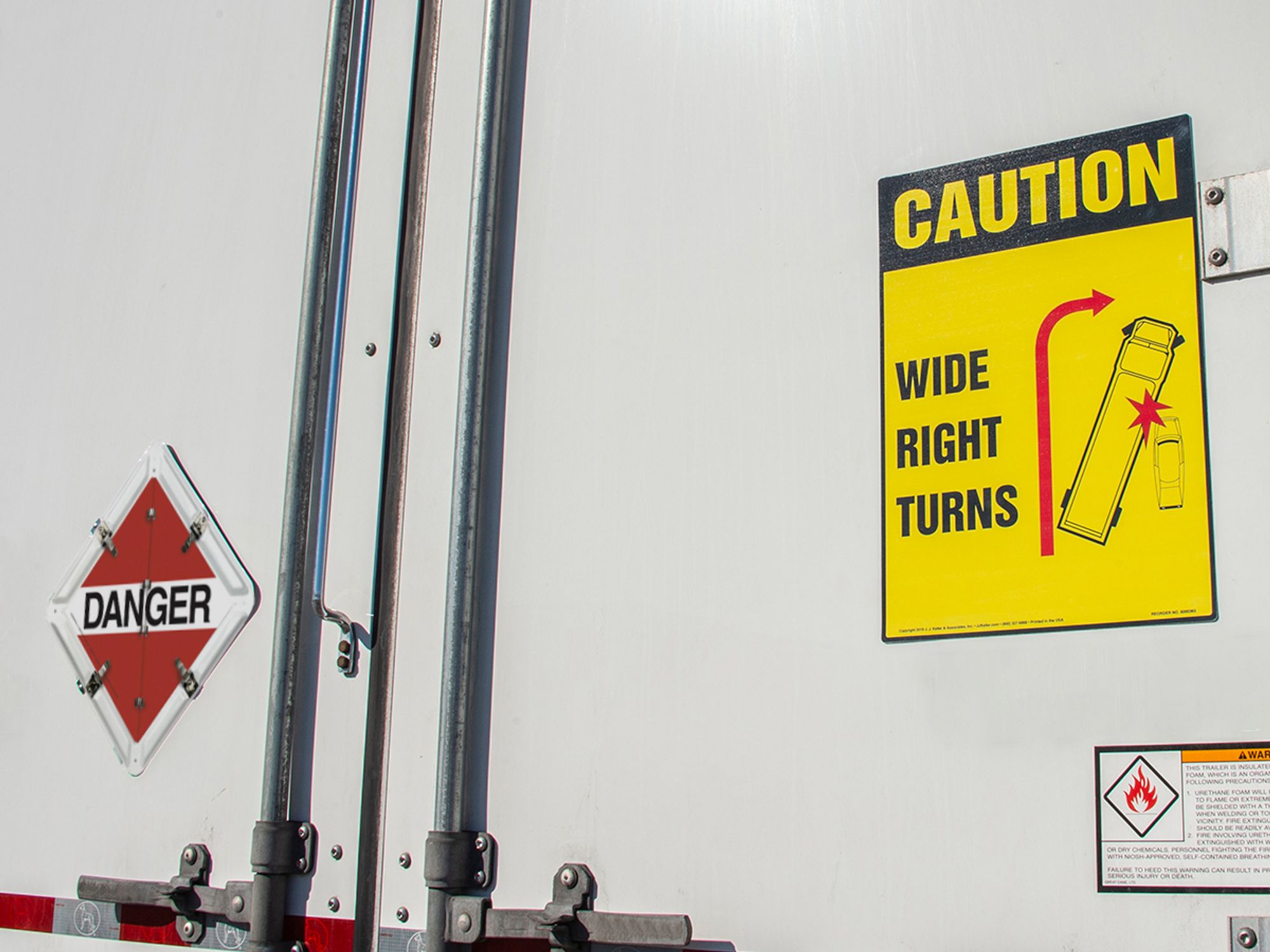Who is responsible for dangerous goods safety marks?

- Consignors, transporters, and carriers of dangerous goods in Canada must meet specific requirements of the TDG Regulations.
- The display of false or misleading dangerous goods safety marks is a violation of the law.
Responsibilities for dangerous goods safety marks vary depending on their role in transporting or offering dangerous goods, according to Canada’s Transportation of Dangerous Goods (TDG) Regulations.
Consignor responsibilities
Before importing dangerous goods or allowing a carrier in Canada to take possession of dangerous goods for transport, a consignor is required to:
- Display or ensure the display of the required dangerous goods safety marks on each small means of containment and each large means of containment that contains dangerous goods, and
- Provide to the carrier the dangerous goods safety marks for dangerous goods the consignor is offering for transport or importing and that are to be transported in a large means of containment. (Note: the consignor is not required to provide dangerous goods safety marks if they are already displayed on the large means of containment or they are not the correct marks to display because other dangerous goods are present in the large means of containment).
Transporter/carrier responsibilities
The transporter or carrier of dangerous goods is required to ensure all of the following while dangerous goods are in transport:
- Ensure the dangerous goods safety marks remain displayed on the small means of containment;
- Display required dangerous goods safety marks on a large means of containment unless they are already displayed, and ensure the safety marks remain displayed; and
- Provide and display, or remove, the dangerous goods safety marks if requirements for them change.
Loading prior to safety marks on large means of containment
A person must not load or pack dangerous goods into a large means of containment for transport unless, immediately before loading or packing, the large means of containment has displayed on it the dangerous goods safety marks that will be required when loading or packing is complete.
Removal or change of dangerous goods safety marks
If conditions that required the display of dangerous goods safety marks change, the person responsible for the means of containment must determine, as a result of new conditions, whether dangerous goods safety marks must be changed or removed.
If a person neutralizes the contents of the means of containment or unloads, unpacks, cleans, or purges the means of containment, then that person must cover or remove the dangerous goods safety mark when the danger indicated by the mark is no longer present in the means of containment.
If the DANGER placard is permitted to be displayed on a large means of containment, then that placard, in place of any other placard, may continue to be displayed until the large means of containment no longer contains any of the dangerous goods identified by that placard.
Misleading safety marks
It is against the law to display misleading dangerous goods safety marks. If a hazard is not present, no placards can be displayed. For example, it’s misleading to display corrosive placards when no dangerous goods are being transported at the time.
It’s also misleading if the incorrect safety mark is displayed; for example, if corrosive placards are displayed on a means of transport when the hazard is actually a flammable liquid.
Finally, it’s misleading to display logos, words, or symbols that resemble or could be confused with dangerous goods marks.
